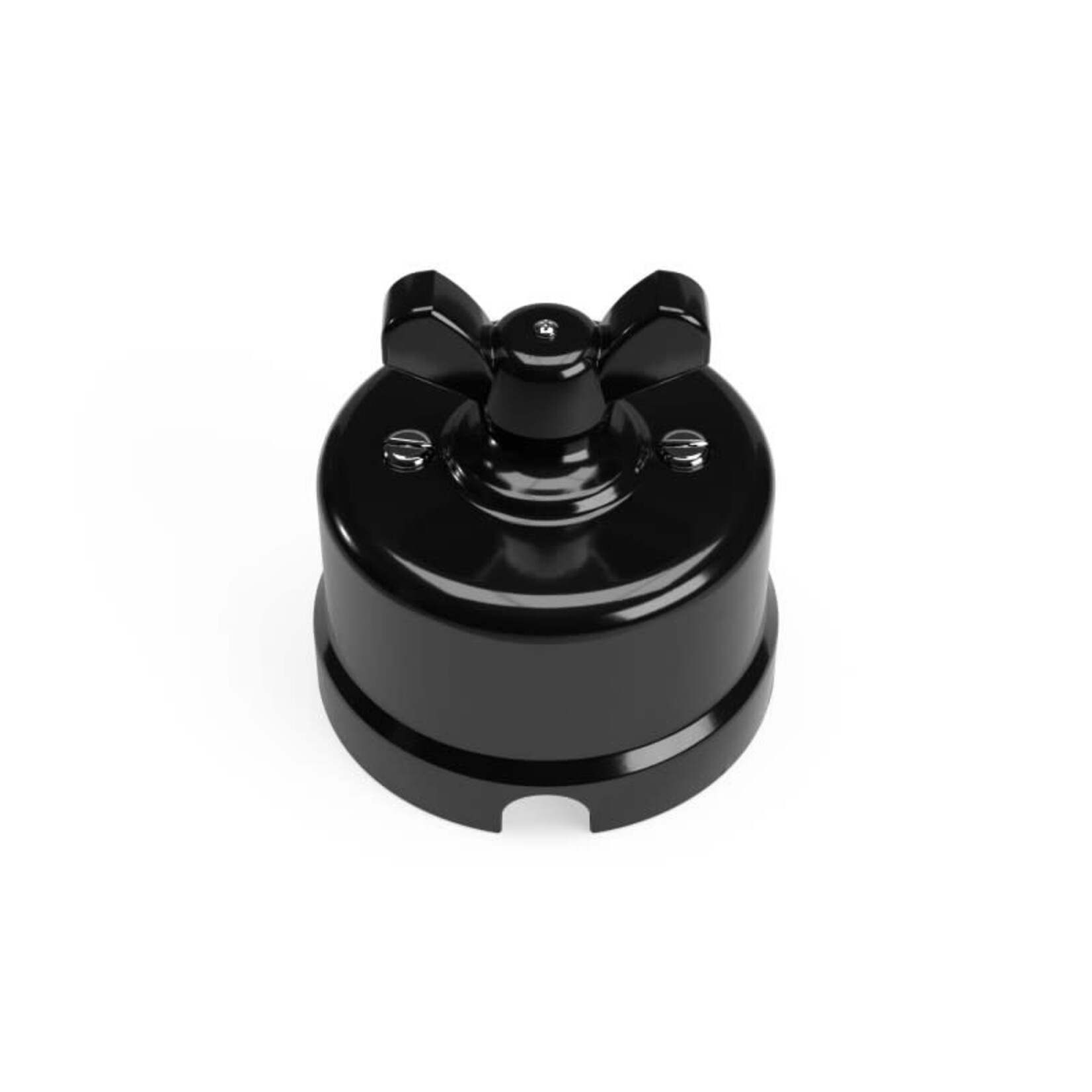White porcelain 10AX250V wall switch/diverter with butterfly nut
- Measurements: Ø 66.5 mm, h 69 mm
- Base colour: black; butterfly nut colour: black
- CE Quality Mark
- Rated voltage: 250 Volt AC
- Frequency: 50-60 Hz
- Rated current: 16 A
- Connection type: Screw clamp
Attention:
- Limited to indoor use
- Contact professional help before installing
- To use in illumination systems with traditional sockets
- Only use double insulation fabric cables
- The first isolator/wall attachment must be positioned at a maximum distance of 5 cm from the socket, junction box or diverter. The others must be positioned at 80/100 cm intervals.
What is the difference between a diverter and a switch?
They're both electrical devices used to interrupt or control the current flow in an electrical circuit. They are, however, set apart by a few differences.
- The switch is a unipolar device, which means it is designed to interrupt or allow the current flow in a single circuit. In other words, a switch can open or close only one electrical circuit. Switches are commonly used to turn lights, outlets, and other electrical devices on and off.
- The diverter on the other hand is a multipolar device designed to direct the current flow in two or more circuits. The diverter is able to connect or disconnect two or more electrical circuits, making it possible to change the direction of the electricity. This means that it can be used to turn a single light on and off from multiple locations, using different buttons.






